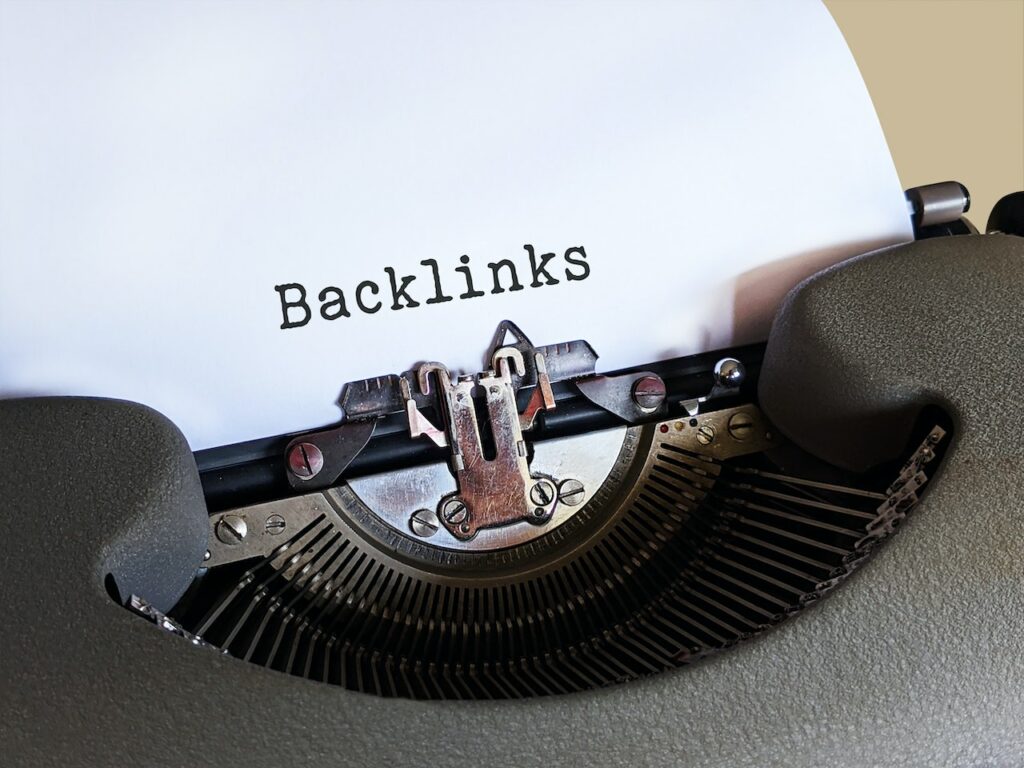
Backlinks are one of the most often utilized SEO terms. Backlinking with well-known and respected websites is vital in search engine algorithms. They can determine whether a website climbs or falls in search rankings.
Backlinks, according to Google and other major search engines (Bing, Yahoo), have a significant impact on the quality and quantity of your webpage. Websites with backlinks are more likely to achieve strong organic search engine results since they provide more material that drives visitors to their web pages and websites.
Do you know which backlink types to put first in your current link-building campaign? The struggle to rank your web pages on Google or Bing’s results pages doesn’t end with high-quality SEO content writing. The second half involves promoting your content and developing backlinks via a successful backlink strategy.
If you want to scale link building without spending too much money or time, call or email our link building company and we’ll see how we can help your business!
And we go further on the topic.
What are SEO backlinks?
Backlinks are links to your website that appear on other websites, social media platforms, directories, and other web areas. Having high-quality backlinks from reliable websites tells search engines that your material is reliable and valuable. Websites with more backlinks will therefore often rank higher on search engine results pages (SERPs).
All webmasters, content marketers, and SEO experts fully understand the importance of backlinks. However, the majority of them are unclear about what makes a solid, strong backlink that elevates their website in the SERPs.
Understanding the distinctions between quality backlinks and those that might harm your website is crucial. Additionally, you must be very certain of the kinds of backlinks you should seek out and the ones you should avoid when developing a link-building plan.
How many types of backlinks are there in SEO?
It is hard to provide an exact quantity of different types of backlinks. Many factors may be used to distinguish between various sorts of backlinks, such as:
• By ways for acquiring: self-built, naturally-acquired, SEO attack;
• By link building strategies: awesome content, social media, guest posts, paid posts, etc.;
• By websites’ quality: authority, traffic, relevance, unrelated, spam;
• By hyperlink location: main content, navigation, site-wide links (in footers, sidebar), badges, etc.;
• By attribute: dofollow, nofollow, user-generated content (UGC), sponsored.
The most crucial consideration for link-building, however, is how much SEO value a link will offer to your site. As a result, we provide a concise definition of backlink types in which we will evaluate links based on their SEO weight.
Dofollow backlinks
Dofollow backlinks are the most popular and useful sort of SEO backlink.
When you place a dofollow link on your website, you are informing Google that the link is organic — that the target website did not pay for the link — and that you are vouching for the accuracy of the information at the other end of that link.
Dofollow merely informs Google and other search engines that “the material on the other end of this link is significant and should be acknowledged.”
There’s nothing different about that link, it’s just a standard link. That’s one of the reasons why dofollow links are so popular – they’re the simplest to implement.
Nofollow backlinks
Nofollow backlinks are less frequent. They also value less. They are used to instruct search engines to disregard a certain link.
According to Google, “Nofollow” provides a means for webmasters to tell search engines “Don’t follow links on this page” or “Don’t follow this specific link.”
The HTML syntax for these links is identical to that of dofollow links, with one major exception: the “rel=nofollow” tag.
A website’s percentage of dofollow vs nofollow links will vary. For a healthy link profile, Google prefers a solid combination of both.
The primary distinction between these two sorts of connections is that Google places a high value on dofollow links, making them ideal for various types of SEO. Nofollow links may be ignored by Google, but they can still be useful. Some authoritative resources such as Wikipedia make all Nofollow links, but these links will still help the site: firstly, link clicks can bring you referral traffic, and secondly, SEO experts still note that Nofollow links in authoritative resources help the site in ranking.

Best types of backlinks for SEO: Tier-1 backlinks
There are several characteristics that distinguish a “good” backlink. If you want to keep things simple, remember this basic rule: any backlink that organically arrives at your site from a relevant and authoritative source is usually a good backlink. This is often referred to as “organic link building.”
Organic link building drives you higher in search engine results webpages and increases the authority and credibility of your website in the eyes of search engines. However, organic link building is the most difficult and time-consuming method of producing backlinks. That is why so many SEOs resort to spammy and “easier” methods.
Let’s look at a couple of distinct kinds of Tier-1 backlinks.
Editorial links
Editorial references that highlight your site and offer a link inside relevant, high-quality material are perfect backlinks. Editorial backlinks are often formed when your own content (such as an article or infographic) is mentioned as the source of certain information, when a corporate representative is mentioned or interviewed, or when your website is featured in a link roundup on a specific issue.
Generate evergreen material that displays your standing as a thought leader, so that your website and brand are recognized as a go-to resource for interviewing and industry expertise. Create compelling, shareable content with the potential to go viral. Use SEO tools capable of spotting popular keywords and themes that rivals have been effective with but your website has yet to cover to flesh out your content plan.
Guest blogging backlinks
When sending guest articles to well-established blogs, it’s generally viable to attach an editorial hyperlink to your own website. Guest posting outreach to soliciting valuable websites for these possibilities should be an important component of almost any SEO plan.
Backlinks in business profiles
Creating digital profiles for your company on business listing sites, social networks, industry portals, and review websites almost always include the option to create a hyperlink (or a few). These listings are viewed by search engines as proof that a website is well-established.
Backlinks from webinars
Webinars (and their recordings) provide extremely important information for websites to link to. Websites will frequently incorporate webinars on their own pages, along with a link to and mention of your business. To obtain these backlinks, use techniques similar to blog promotion: websites you target for blog posts may also wish to include your webinar as a source.
Free-tool backlinks
Offering a helpful tool for free is another effective way to gain interest and backlinks that have a significant and long-term influence on SEO. This might include developing a simple but-useful item, such as a cost calculation beneficial to folks in your sector, or offering a free version of a commercial application. To generate backlinks, market the tool with websites that have a comparable readership to yours (use SEO tools to find them) as well as the websites that your guest writing targets.

Other types of links you should have in your backlink profile
Acknowledgment backlinks
Sites frequently display acknowledgments when a business makes a gift, sends a representative to speak at or support an industry event, and so on. SEO tools that determine where your rivals’ backlinks come from might help you uncover and strategy around prospective possibilities to earn your own acknowledgments.
Guest post bio backlinks
If a site that permits guest blogging does not allow backlinks inside the article, the author’s bio normally does. Backlinks have a favorable influence on SEO even when they are not found in editorial material.
Badge backlinks
One smart backlinking strategy is to create a badge to present to other businesses as acknowledgment for their position or performance in some manner. You gain a link back to your site when such sites proudly display the emblem. Again, you’ll want to use SEO tools to identify sites with comparable audiences to yours in order to define target audiences for your badge program.
Backlinks from press releases
When your company has a noteworthy statement to make, issuing a press release may serve as a foundation for your public relations and marketing efforts, while also generating backlinks from sources that cover the news and the posted release itself.
Comment backlinks
Posting authentic and relevant material comments with a backlink is typically okay if it adds value to the discourse. However, if used in a spammy way, this method might have a detrimental impact on your search engine reputation. Take caution not to overdo it.
Bad backlinks you should avoid
Paid Links
Search engines are designed to evaluate the worth of your site based on its true, earned engagement with other websites. Google advises that buying and selling links can have a detrimental impact on a site’s ranking in search results. When you purchase links to get an SEO for business growth, you don’t always get what you paid for.
Backlinks in press releases that are not newsworthy
Writing press releases only for the sake of generating backlinks is a spammy activity that may harm SEO.
Low-quality or irrelevant directory links
Creating accounts in services that aren’t trustworthy and reputable (or just unrelated to your business) might be interpreted as spam and hurt your SEO efforts.
Low-quality forum backlinks
Your brand’s forum postings, particularly those that involve hyperlinks, should be confined to high-quality forums and real debates. Attempts to spam links on these sites may have the opposite impact intended.

Final thoughts on backlink types
Backlinks are essential. They increase the credibility and authority of your site in the eyes of search engines, propelling your web content higher in the SERPs.
However, it is also critical to consider the sorts of backlinks you are producing. Not every backlink will help you rank higher in search engines. The terrible ones would even get you in trouble. Learn more about backlinks audit in our blog.
Building all of these sorts of linkages manually might be time-consuming (although still beneficial). That is why you should think about outsourcing link building services. You’ll save time and money, and you’ll receive a lot higher return on your efforts.
FAQs
What are the types of backlinks?
In the world of SEO, there are two main types of backlinks: Dofollow and Nofollow. The difference is in the source code. There is a special tag in the source code that determines how Google and other search engines see the backlink, which also determines the impact of this backlink on your SEO profile.
There are also different categories to consider when building your backlinks.
What are dofollow and nofollow backlinks?
Dofollow and nofollow backlinks are two ways for recognizing a link and instructing Google on how to correlate the website to which you are linking with your website. Dofollow links provide authority to a website, but Nofollow links do not convey link juice.
What are high-quality backlinks?
A quality backlink is one that originates from a website with a high domain authority that is well-trusted by both search engines and users. In other words, not only do the robots trust the website but so do actual people.
What are the most powerful backlinks types?
First of all, the most powerful are links from authoritative resources in your niche. It is preferable to get do-follow backlinks, as they pass SEO juice from the site, providing the link to the site receiving the link.
What types of backlinks are bad for SEO?
The low-quality backlinks are from pages that are not related to your content, backlinks with unnatural anchor text, backlinks from low domain authority or domain rating, backlinks from spammy/penalized/hacked websites, and from web pages with thin content.
How many backlinks is good?
In general, a monthly grade of 60 to 100 is great, 40 to 50 is fine, and less than 40 is not exceptional. If you want to build high-quality backlinks, start by obtaining connections from websites with high domain authority. These links must be related to your topic and trusted by search engines all across the world.





